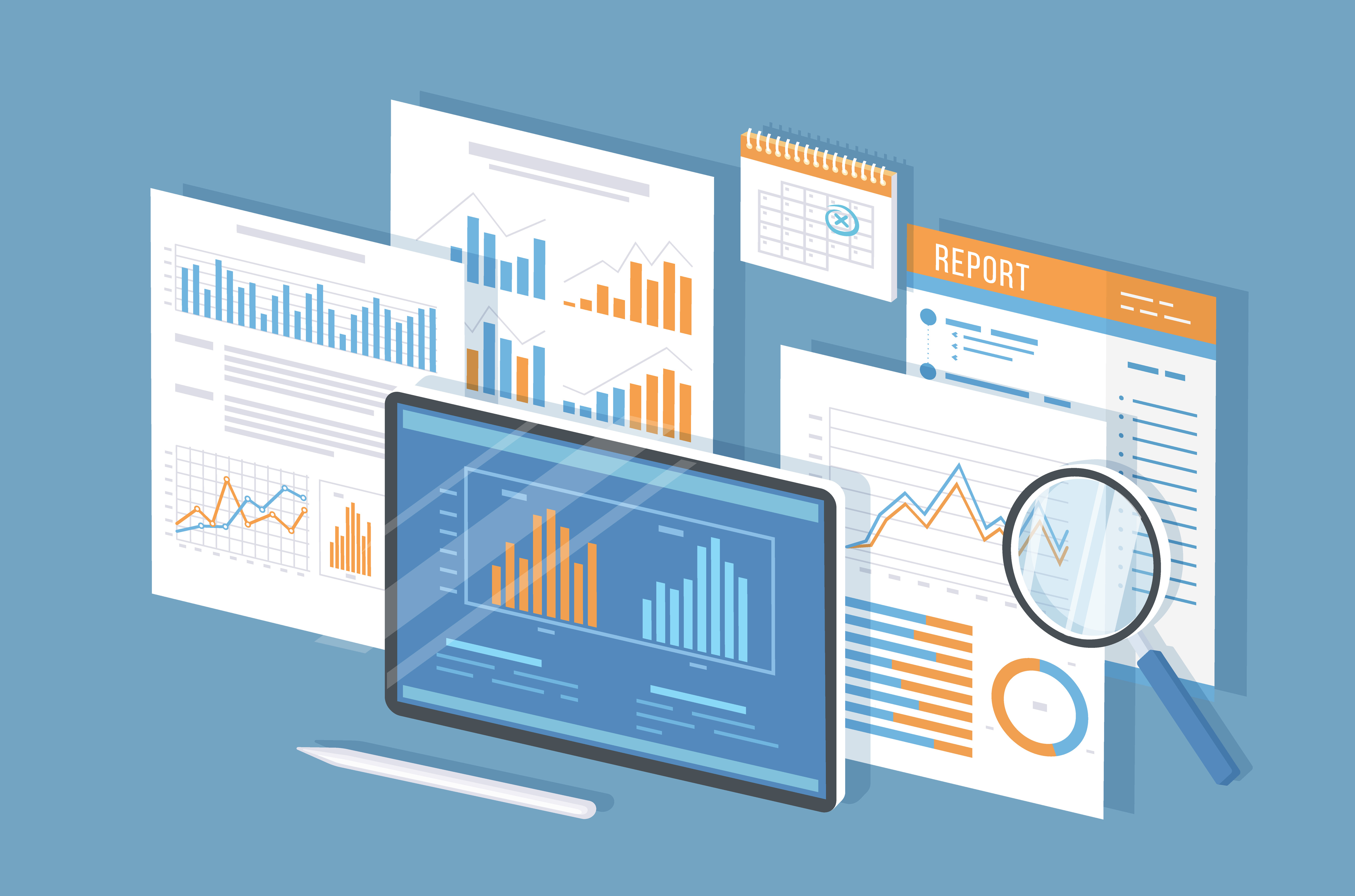Digital technology has become crucial to maintaining food safety visibility and transparency in the workplace. Here we identify the key topics businesses need to prioritise to implement an efficient digital food safety process.
As food production and distribution become more interconnected and wide-reaching, it is vital for food businesses to ensure their products meet the highest standards of quality and safety.
Digital technologies have become indispensable in this capacity. From tracking systems that shed light on supply chains to online platforms that enable coordinated safety assessments, these tools are the backbone of modern food safety.
Let’s dive into exactly what we mean by digital food safety, what it requires in terms of processes and tools, and how to optimise your own systems for paramount safety and assurance.
What is digital food safety?
Digital food safety can be defined as the use of digital technologies to protect consumers from food-borne illnesses and other hazards.
Some key features of digital food safety include:
- Site audits for hygiene, packaging, storage and other environmental issues
- Raw material checks for temperature, contamination and expiration dates
- Incident reporting and management, with the data being analysed for broader risk assessment
- Customer complaint integration to address any complaints related to food safety
By using digital tools in these areas, food producers and suppliers can identify potential risks much more effectively, collaborating in real-time to address them and ensuring that all relevant parties are fully informed.
This means comprehensive digital food safety not only improves product quality for your consumers but it also reduces the compliance costs of manual safety monitoring - and largely removes human error from the equation.
What is involved in digital food safety management?
Breaking this down even further, digital food safety management depends upon the identification and monitoring of critical control points, or CCPs.
Critical control points are key stages in the food supply chain where biological, chemical or physical hazards can be introduced. By auditing CCPs and sharing real-time insights, businesses can zero in on potential risks and take corrective action as soon as possible.
Examples of critical control points
Though the exact CCPs of a given product will depend on its supply chain, these points typically involve food being altered or transported in some way. For example, if a food company produces and distributes a frozen product, CCPs might include:
- Initial ingredient prep
- Ingredients being combined and heated during production
- Products being cooled and stored
- Cooked products being frozen for packaging
- Frozen products being packaged and sealed
- Packaged products being loaded for transport
- Products being unloaded and stored in the new facility
At each point, the company would want to implement technology to minimise the risks of contamination, improper storage and any other issues.
For example, they might use built-in sensors to gauge temperatures during production and storage, rather than having workers conduct manual temperature checks. Or they might use smart product tags to automatically track where products are in transit, instead of having warehouse and delivery workers checking them off manually.
Of course, digital food safety cannot completely eliminate human error - but it does significantly reduce the likelihood of irreversible damage to food. With digital tools like these, businesses can practically guarantee high-quality and secure food products for their consumers.
Getting the most out of a digital food safety system
We've explored the ins and outs of what you need, now here's how to implement and optimise your own digital food system in four simple steps.
1. Identify those critical control points
As we've established, the foundation of any good food safety system is knowing your critical control points. While you might be eager to implement technology right away, make sure your business maps out every CCP for every one of your products beforehand - all the way from prep to delivery. This will allow you to incorporate preventative measures into your digital safety solution:
-
Hazard Analysis and Critical Control Points (HACCP): Digital HACCP plans can be created to streamline the daily monitoring and managing of potential hazards. This can include procedures and protocols for monitoring microbiological, chemical or physical hazards, as well as sharing hazard-related insights to relevant team members in real-time.
-
Vulnerability/Threat Assessment and Critical Control Points (VACCP/TACCP): Food fraud poses a substantial risk to public safety, and digital tools can help you identify common vulnerabilities and threats across the supply chain. Furthermore, if food has been intentionally contaminated, digital technology will allow you to rapidly escalate issues and manage risks by alerting suppliers, retailers and manufacturers.
2) Determine which tool(s) should be implemented at each point
Not every tool will be useful at every CPP. Fortunately, it should be simple to figure out which tool(s) are needed at each stage - particularly with increasing transparency in how other food businesses manage their supply chains.
Do keep in mind that if optimal implementation will be difficult or expensive, it's better to wait until you have the resources to implement it properly; in this context, subpar technology can be more damaging than no technology at all.
3) Implement the necessary technologies
Once you’ve narrowed down your tools, it’s time for implementation. Make sure your installation processes stay on a reasonable timeline, and that all relevant teams are clear on how the technology works and what (if anything) they need to do differently.
Additionally, prepare yourself for an adjustment period – some teams may need additional training and some tools might not work as expected. Be patient during implementation and don’t ignore problems that arise. Digital food safety is not about handing your operations over by letting tools run unsupervised; it’s about continuously monitoring and improving technologies for the best possible results.
4) Centralise operations and conduct regular checks
Again, you will want to continue checking your tools to ensure they’re working properly, even once you’ve had them for months or years.
It’s up to you how often your business conducts these checks and what form they take, but so long as you keep paying attention, you will be well on your way to long-lasting success and unparalleled trust from consumers.
Indeed, vigilance is key when it comes to digital food safety – fortunately, centralised software makes it simple to implement, monitor and adapt technologies as needed.
Our dynamic and scalable Food Safety and Management Software allows your business to perfect its digital safety measures without the hassle of individual implementation.
Try a free demo of the Foods Connected platform today.
.jpg)
Greer McNally
Greer has over 15 years’ experience writing about trends in the food and retail sectors. She lives in a little village by the sea in Northern Ireland and loves creating content that informs how people think about the food industry. A recent career highlight was interviewing the legend that is Dr Temple Grandin.
Stay up to date
Stay up to date
Browse Posts
- December 2025
- November 2025
- October 2025
- September 2025
- August 2025
- July 2025
- June 2025
- May 2025
- April 2025
- March 2025
- February 2025
- January 2025
- December 2024
- November 2024
- October 2024
- September 2024
- August 2024
- July 2024
- June 2024
- May 2024
- April 2024
- March 2024
- February 2024
- January 2024
- December 2023
- November 2023
- October 2023
- September 2023
- August 2023
- July 2023
- June 2023
- May 2023
- April 2023
- March 2023
- December 2022
- November 2022
- October 2022
- September 2022
- August 2022
- July 2022
- June 2022
- May 2022
- April 2022
- March 2022
- February 2022
- January 2022
- December 2021
- November 2021
- October 2021
- August 2021
/1.%20HubSpot%20Images/Thurs%2013th%20-%20Blog%205%20graphic2.jpg)

/Blog%20Headers/shutterstock_1927957907%20(1).jpg)
/Blog%20Headers/shutterstock_1845178195%20(2).jpg)
/Blog%20Headers/shutterstock_2133827717%20(1).jpg)
/Blog%20Headers/shutterstock_2473376713.jpg)
/Blog%20Headers/shutterstock_2247276303.jpg)
.png)
.png)



/Blog%20Headers/Digital%20Food%20safety%20management%20system.jpg)

/Graphics%20used%20in%20blogs/Food%20Fraud-honey.jpg)

.png)
/Blog%20Headers/shutterstock_2379574047.jpg)
/1.%20HubSpot%20Images/IMG_20230605_144537.jpg)
![[Infographic] Your road to regulatory compliance](https://blog.foodsconnected.com/hubfs/Blog%20Imagery%20(PI%20AUTOMATED)/Blog%20Headers/shutterstock_2212775551.jpg)
/Blog%20Headers/shutterstock_1886990077.jpg)
/Blog%20Headers/Blog%20Header%20+%20Social%20Graphic%20_17%20(1).jpg)